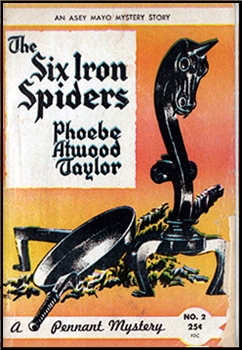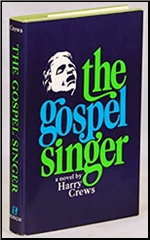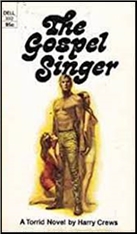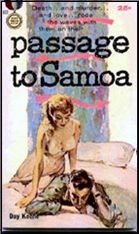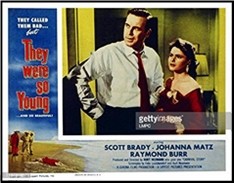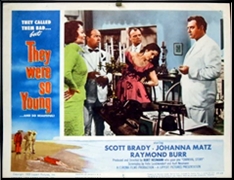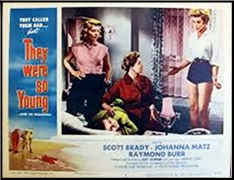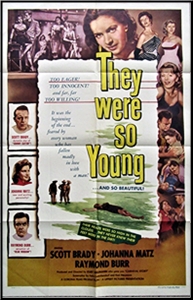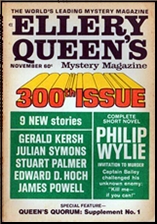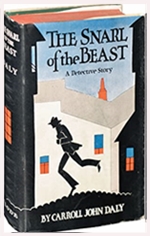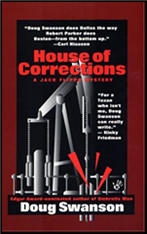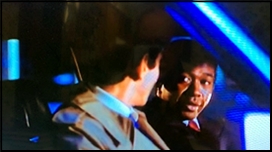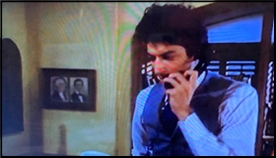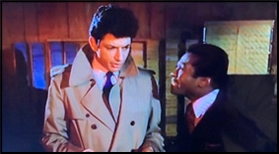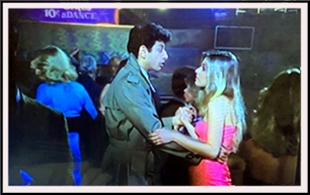FIRST YOU READ, THEN YOU WRITE
by Francis M. Nevins
Several months ago I wrote a column discussing some of the pre-World War II Inspector Schmidt novels written by Aaron Marc Stein under the byline of George Bagby. The last of these, which I don’t have and for that reason didn’t discuss, was MURDER CALLING “50″ (1942). Aaron spent the years after Pearl Harbor first in the Office of War Information, then in the Army where he served as a cryptographer. His military specialty plays a large role in the first postwar Bagby novel.
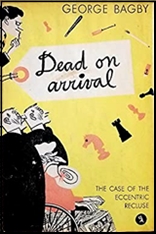
DEAD ON ARRIVAL (1946) was published five or six months after the end of the war but is set and may have been written in its early years, with references to blackouts and the rubber shortage and all the male characters of military age waiting to be called into the service. For a novel the unities of time and place are extreme, with the action covering about twelve hours—between late on a Sunday afternoon in 1942 or ‘43 and before dawn the next morning—and mainly confined to a single building, an old brownstone worthy of Charles Addams in Manhattan’s East Fifties, occupied by a hyper-eccentric old cripple and his two all-but-deaf servants, who happen to be judo experts, with a female antique dealer and a young engineer living in the house next door.
Schmitty and Bagby happen to be in Bellevue Hospital on business when a hysterical Western Union messenger boy is admitted, claiming he found a dead body in the house where he delivered a telegram. This makes Schmidt the first cop to arrive on the scene, and the crime quickly proves bizarre enough: a corpse with a broken neck and a pair of panties found inside his suit who is soon identified as the only living relative of the house’s owner, a wheelchair-bound old man with a long long beard in which he keeps various objects like chessmen.
The panties prove to belong to the antique dealer next door, and both she and the young engineer living in the same building turn out to have a habit of visiting the house where the murder happened by climbing from the fire-escape balcony of the one brownstone onto that of the other. Before the end of the book’s twelve-hour time span there are three more murders.
The synthetic rubber process that ultimately motivated the killings isn’t even mentioned till the seventh of the book’s ten chapters, and the cast is so small that the Least Likely Suspect is rather easy to spot even though Bagby can hardly be said to play fair with the reader. The long message in cipher which Schmidt discovers during the night leads to a fascinating lesson in cryptography even though it implausibly requires both Bagby and the guy who fashioned the message to be experts in that arcane science. Aaron’s addiction to super-lengthy sentences remains intact from the pre-war years, as witness this one example among many.
Every move the inspector made in that investigation, he found himself hampered not by a lack of material on which he might work but by the way he was jostled and harried by clues and leads and suspects, all vying for his attention, all pressing their strong, if tacit, claims to guilt, all apparently of equal weight, but each existing as though it were the sole occupant of its own special vacuum, giving the bow to no other clues, betraying no connection with anything else relevant or irrelevant.
These literary Dagwood sandwiches may not be to everyone’s taste but they’re okay by me and were also acceptable to Anthony Boucher, whose review for the San Francisco Chronicle (10 February 1946) simply capsulized the plot and welcomed Schmitty back into action “with a huzzah.†As who didn’t?
***
Tony was especially fond of those whodunits that offered what he called a dividend, by which he meant a trove of reliable information on some off-trail subject. In DEAD ON ARRIVAL the subject was cryptography but the dividend had little to do with the plot. In the next Bagby novel the integration between those elements is near perfect. THE ORIGINAL CARCASE (1946) shares with its predecessor a very tight time frame, with events kicking off on the evening of Wednesday, September 4, about a year after the end of the war, and winding up less than 24 hours later.

As in DEAD ON ARRIVAL, Schmitty is the first cop on the scene. He’s in Bagby’s apartment—a building with twin towers in whose upper stories are units with terraces—when the two men hear a horrible scream coming from the only terrace apartment in the tower opposite Bagby’s that is ablaze with light. In a few minutes they’ve discovered the cause of the scream: a young bride and her husband, returning from their honeymoon, were greeted by the bride’s friends and relatives (not the groom’s) with a surprise party which was cut short when the bride opened the cupboard doors of one of the wedding presents, a 7-foot-long Sheraton mahogany sideboard, and found a dead body inside.
No one can identify the strangled corpse but Schmitty soon begins to wonder whether the murder has any connection with the social backgrounds of the newlyweds, the bride coming from an upper-crust family and her husband the younger brother of a notorious Prohibition-era gangster who, in a time of severe housing shortage, secured the apartment for them. During the small hours, after the police have left and the unit is deserted, someone manages to sneak in and throw the sideboard off the terrace into the street, smashing it to smithereens.
Later in the night comes, as usual in Bagby, a second murder, the victim this time being a key employee of the antique dealer who provided the sideboard. Tony Boucher’s description of the novel in the Chronicle (20 October 1946) was nothing short of ecstatic. “To the average reader a delightfully told story; to the mystery technician a model of precisely how to integrate a love motif, an absorbing dividend and a perfectly plotted problem.â€
***
Just as THE ORIGINAL CARCASE shows us that Aaron must have spent a good deal of his spare time prowling around antique shops, the next Bagby novel indicates that he was equally fond of sports events. THE TWIN KILLING (1947) opens on a steamy summer night with Schmitty investigating the barber-shop murder of a big-time gambler with a habit of getting himself shaved and spruced up in that shop after it was closed to the public.

According to the evidence the Inspector painstakingly accumulates in the first and most interesting chapters, the murderer might have come straight out of an Ellery Queen novel. First he broke into the gambler’s apartment and stole his .45 and a pair of his shoes, then he bought a ticket at a flea-pit theater which was showing a war flick with lots of shooting, changed into the stolen shoes, left the theater by the balcony fire door, crossed over to the roof of the adjacent barber shop, shot the gambler with the .45 through the shop’s open skylight during the movie’s loudest combat scene, crossed back to the theater, changed back into his own shoes and split.
It’s only after this reconstruction that baseball enters the picture in the form of the dead man’s connections with four players, two old hands at the game and a pair of promising rookies. Aaron never mentions the name of the team nor what stadium they play in, but Schmidt and Bagby while on the case get to attend three games, the last of which provides the setting for what is all but inevitable in a Stein novel, a second murder, with all the suspects from the first murder conveniently in the ballpark.
I wouldn’t call this one fair to the reader, but the baseball environment and players are vividly rendered—thanks perhaps to iconic sportscaster Red Barber, to whom the book is dedicated—and all in all Tony Boucher’s comment in the Chronicle (6 April 1947) can’t be improved on: “A trifle loose in solution but as fresh, lively and agreeable a sports whodunit as has turned up in years.â€
